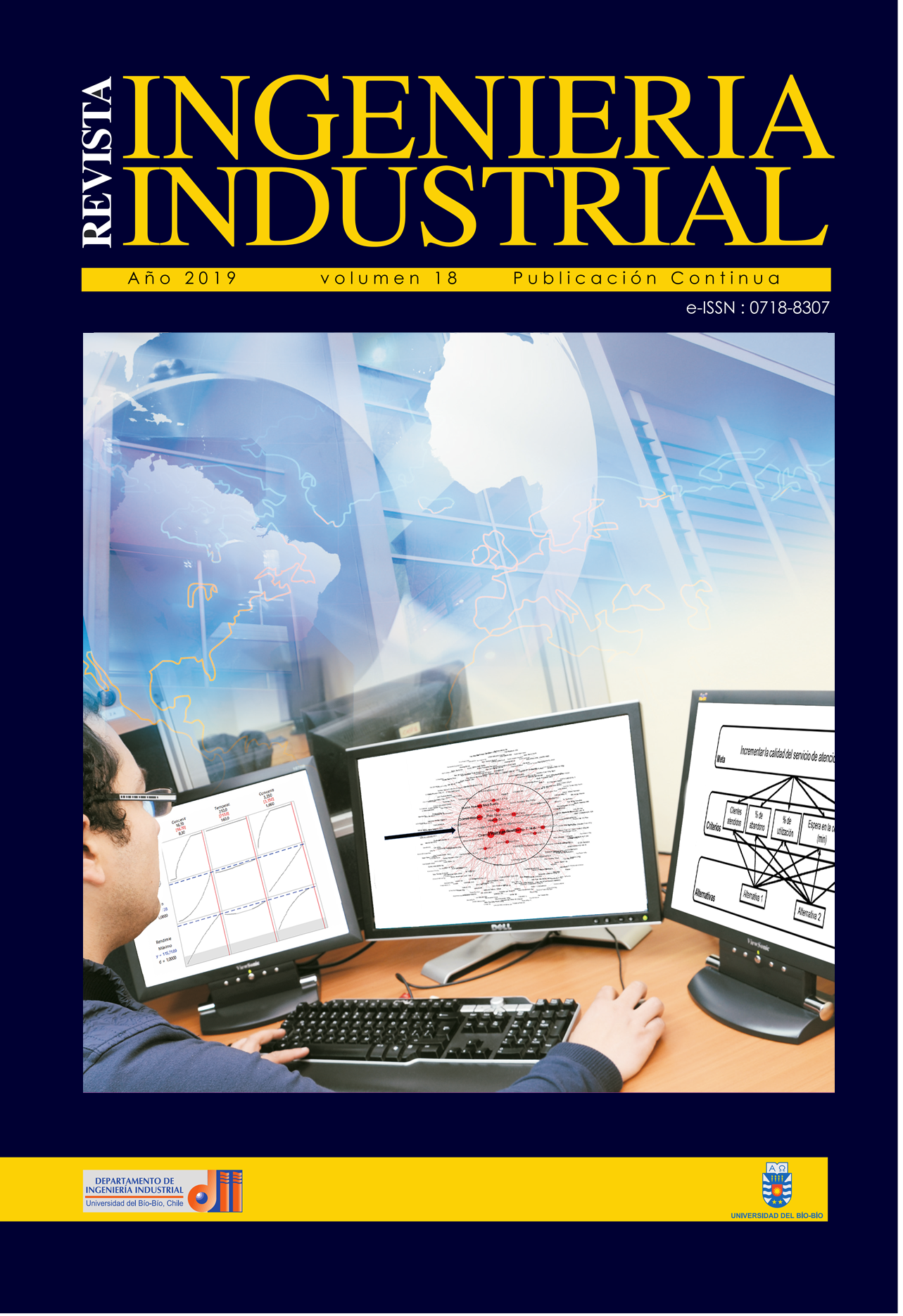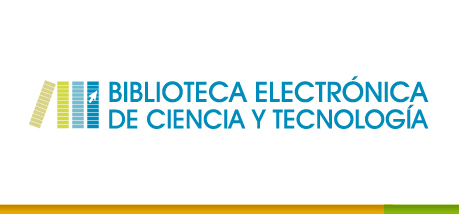PROCEDIMIENTO PARA DETERMINAR EL CONSENSO EN LA TOMA DE DECISIONES
DOI:
https://doi.org/10.22320/S07179103/2019.04Palabras clave:
Consenso, toma de decisiones, consistencia, simulación, grupo de expertosResumen
Este artículo propone un procedimiento para arribar a un consenso cuando un grupo de expertos tiene preferencias relativamente homogéneas, sobre indicadores de importancia de los criterios “pesos” que evalúan las alternativas aplicadas; y es posible estimar el comportamiento o los resultados después de implementar cada alternativa. Estos “pesos” están relacionados con la posición de cada criterio en un ranking de importancia; por tanto, cuando se halla el consenso, éste puede interpretarse como el ranking consensuado por el grupo. La novedad en este procedimiento radica en que asume que el consenso puede no existir (el grupo puede no tener preferencias relativamente homogéneas); analizando simultáneamente el nivel de consistencia de cada uno de los “expertos” para que el procedimiento no fuerce el consenso. El procedimiento propuesto es presentado en un caso de estudio donde se utilizó la simulación para conocer los posibles resultados de implementar cada alternativa; lo que permitió evaluar matemáticamente las alternativas y romper con la forma clásica de evaluar las alternativas directamente por los expertos; y como resultado se logró mejorar la calidad del servicio de atención al cliente.
Descargas
Citas
DAJANI, J. S., SINCOFF, M. Z. y TALLEY, W. K. (1979). Stability and agreement criteria for the termination of Delphi studies. Technological Forecasting and Social Change [en línea], 13(1), 83–90. Disponible: https://doi.org/10.1016/0040-1625(79)90007-6
FREUND, J., MILLER, I. y JOHNSON, R. Probabilidad y estadística para ingenieros. PrenticeHall. 1996.
GAO, R., NAM, H.O., KO, W.I. y JANG, H. (2018). Integrated system evaluation of nuclear fuel cycle options in China combined with an analytical MCDM framework. Energy Policy [en línea], 114(September 2017), 221–233. Disponible: https://doi.org/10.1016/j.enpol.2017.12.009
GONZÁLEZ GONZÁLEZ, A. y GARZA RÍOS, R. (2003). Aplicación de las técnicas multicriteriales en la evaluación y selección de proveedores. Ingeniería Industrial [en línea], 24(2), 34-39. Disponible: http://rii.cujae.edu.cu/index.php/revistaind/article/view/189/173 HILLIER, F. S. y LIEBERMAN, G. J. Introduction to Operations Research. 9th ed. McGrawHill. 2010.
LANG, S., REGGELIN, T. y WUNDER, T. (2017). Mesoscopic Simulation Models for Logistics Planning Tasks in the Automotive Industry. Procedia Engineering [en línea], 178, 298–307. Disponible: https://doi.org/10.1016/j.proeng.2017.01.118
LE PIRA, M., INTURRI, G., IGNACCOLO, M., PLUCHINO, A. y RAPISARDA, A. (2017). Finding shared decisions in stakeholder networks: An agent-based approach. Physica A: Statistical Mechanics and Its Applications [en línea], 466, 277–287. Disponible: https://doi. org/10.1016/j.physa.2016.09.015
MANNINA, G., REBOUÇAS, T. F., COSENZA, A., SÀNCHEZ-MARRÈ, M. y GIBERT, K. (2019). Decision support systems (DSS) for wastewater treatment plants – A review of the state of the art. Bioresource Technology [en línea], 290(July), 121814. Disponible: https://doi. org/10.1016/j.biortech.2019.121814
MARTÍNEZ DELGADO, E., GONZÁLEZ SÁNCHEZ, C., GARZA RÍOS, R. y HERNÁNDEZ ASCO, C. (2018). Integración de la simulación, la regresión y la optimización multiobjetivo para determinar los recursos en un banco. Revista Investigacion Operacional [en línea], 39(1), 140–150. Disponible: http://www.invoperacional.uh.cu/index.php/InvOp/article/view/591/553
MIODRAG, Z., KAFFKA, J., CLAUSEN, U., MUNSEL, L. y DROST, S. (2016). Assessment of Emissions Caused by Logistics Handling Operations in Multimodal-terminals. Transportation Research Procedia [en línea], 14, 2754–2761. Disponible: https://doi.org/10.1016/j. trpro.2016.05.483
ROßMANN, B., CANZANIELLO, A., VON DER GRACHT, H. y HARTMANN, E. (2018). The future and social impact of Big Data Analytics in Supply Chain Management: Results from a Delphi study. Technological Forecasting and Social Change [en línea], 130(January), 135– 149. Disponible: https://doi.org/10.1016/j.techfore.2017.10.005
SAATY, T. L. (1990). How to make a decision. European Journal of Operational Research [en línea], 175, 9–26. Disponible: https://doi.org/10.1007/978-1-4614-3597-6_1
SHAHSAVARI, M. H. y KHAMEHCHI, E. (2018). Optimum selection of sand control method using a combination of MCDM and DOE techniques. Journal of Petroleum Science and Engineering [en línea], 171(July), 229–241. Disponible: https://doi.org/10.1016/j.petrol.2018.07.036
TAMOŠAITIENĖ, J., KAZIMIERAS, E. y ŠILEIKAITĖ, I. (2017). A novel hybrid MCDM approach for complicated supply chain management problems in construction. Procedia Engineering [en línea], 172, 1137–1145. Disponible: https://doi.org/10.1016/j.proeng.2017.02.168
VAVRÍK, V., GREGOR, M. y GRZNÁR, P. (2017). Computer simulation as a tool for the optimization of logistics using automated guided vehicles. Procedia Engineering [en línea], 192, 923–928. Disponible: https://doi.org/10.1016/j.proeng.2017.06.159
VON DER GRACHT, H. A. (2012). Consensus measurement in Delphi studies. Review and implications for future quality assurance. Technological Forecasting and Social Change [en línea], 79(8), 1525–1536. Disponible: https://doi.org/10.1016/j.techfore.2012.04.013
VULEVIĆ, T. y DRAGOVIĆ, N. (2017). Multi-criteria decision analysis for sub-watersheds ranking via the PROMETHEE method. International Soil and Water Conservation Research [en línea], 5(1), 50–55. Disponible: https://doi.org/10.1016/j.iswcr.2017.01.003
ZAMANI-SABZI, H., KING, J. P., GARD, C. C. y ABUDU, S. (2016). Statistical and analytical comparison of multi-criteria decision-making techniques under fuzzy environment. Operations Research Perspectives [en línea], 3, 92–117. Disponible: https://doi.org/10.1016/j. orp.2016.11.001
Descargas
Publicado
Número
Sección
Licencia

Esta obra está bajo una licencia internacional Creative Commons Atribución 4.0.
Revista Ingeniería Industrial by Revista Ingeniería Industrial is licensed under a Creative Commons Reconocimiento 4.0 Internacional License. Creado a partir de la obra en revistas.ubiobio.cl/index.php/RI/. Puede hallar permisos más allá de los concedidos con esta licencia en http://revistas.ubiobio.cl/index.php/RI/about/

















